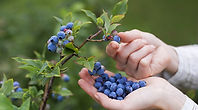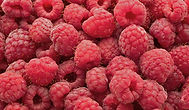












High School Sample Unit 2
Title: Art & Agricultural Connections
Unit Overview:
Estimated Completion Time: 10, 80 minute class periods
Unit Description:
Students extend their observation and invention skills and deepen their knowledge of art making as a means for communication about political, cultural, and local issues. Students consider farming and food systems through the lens of artistic inquiry, cultural identity, and sustainability. After learning about pre-industrial agriculture, large-scale industrial agriculture, and local food and food justice movements, students will design a poster that promotes a sustainable food/land-use concept.
Enduring Ideas/Essential Questions:
What is the timeline of agriculture and when/why did major shifts in practice occur?
How do different cultures practice farming?
What is our local farming story?
How do artists respond to issues of land use and food production?
How can graphic design strategies be used to communicate a message?
National Core Art Standards:
-
VA.Cr1.1.Ia Use multiple approaches to begin creative endeavors
-
VA.Cr2.1.IIa Through experimentation, practice, and persistence, demonstrate acquisition of skills and knowledge in a chosen art form.
-
VA.Cr3.1.IIa Engage in constructive critique with peers, then reflect on, re-engage, revise, and refine works of art and design in response to personal artistic vision.
-
VA.Pr4.1.IIa Analyze, select, and critique personal artwork for a collection or portfolio presentation.
-
VA.Re7.1.IIa Recognize and describe personal aesthetic and empathetic responses to the
-
natural world and constructed environments.
1. What broad, overarching understandings are desired of students?
-
2. What are the overarching “essential” questions that support this unit?
-
3. As a result of this unit, students will be expected to demonstrate an understanding of:
-
4. What “essential” and unit questions will focus the discussions and activities of this unit?
Project 1- Our Edible Landscape
Drawing and Painting at Apex Orchards, Natural Roots, and/or Benson Place
Project 2- Franklin County is Coming to Dinner
Sculpting functional pottery that is symbolic of our local food systems
Project 3- Poster Design to Promote Sustainable Food Systems
Use graphic design techniques to create a poster that educates and advocates for and aspect of sustainable food systems
5. Key Vocabulary or Concepts:
Food Words: Food System, Embodied Energy, Local Food, Food Justice, Mono-cropping, Community Supported Agriculture (CSA), Community Garden, Organic vs. Conventional
Art Words: Functional art, Coil Method, Score and Slip, Handbuilding Technques, Emphasis, Font, Unity, Complimentary Colors and Color Schemes, Contrast, Focal Point, Rule of Thirds
6. Major Learning Activities:
Project 1: Repetitive practice with specific strategies in drawing and painting using direct observation outdoors, and invention strategies derived from alternative mark-making practices. Students create a book to keep the progression of their drawings visible.
Project 2:Continue exploring alternative mark making outdoors with watercolor and color science/theory, derived from the methods of pointillists.
Project 3: Learn about how other artists have been influence by and respond to nature/ environmental issues. Create a personal response to nature/environmental issues utilizing observation, invention, and expressive imagery.
Vocabulary/ Key Concepts:
Food Words: Food System, Embodied Energy, Local Food, Food Justice, Mono-cropping, Community Supported Agriculture (CSA), Community Garden, Organic vs. Conventional
Art Words: Emphasis, Font, Unity, Complimentary Colors and Color Schemes, Contrast, Focal Point, Rule of Thirds
Organizations of Interest: CISA, Local Farms (Davenport's, Hagar's, Apex Orchards, Just Roots, Natural Roots, Benson Place, Double Edge Theatre
Artsists of Interest:
Angelina Quic Ixtamer: Contemporary Mayan Artsist. Paints bird's-eye-view images of harvests and workers in Guatamala using very bright colors and a rhythmic composition
Vincent Van Gogh: Late 1800's, preindustrialization images of farms and farm workers in France
Mishka Henner: Contemporary French/British/Belgian Artist. Feedlot Series. Complies Satellite Imagery to create detailed photographs of factory farms and feedlots. Run-off pollution and the land-clearing effects are made visible only be zooming way out
Ester Hernandez: Sun Mad, 1979. Activist artist from California.
Ester Hernández grew up in California’s San Joaquin Valley, where she unknowingly bathed in and drank polluted water and worked in an environment contaminated by pesticides. The Hernández family was actively involved in the struggle for farm workers’ rights, an issue of great concern to César Chávez.
Questions about the effects of pesticides on agricultural workers prompted her to create Sun Mad. Her posters have been controversial. She recounts how Sun Mad began when she went "home to visit my mother in 1979, reading the articles she saved about water contamination in the barrio.” After thinking about it for two years, and remembering her work as a farmhand, she focused her anger on the dangers of growing grapes for the raisin industry. "I focused on something personal, the Sun Maid box," she said. "Slowly I began to realize,” she continued, “how to transform the Sun Maid and unmask the truth behind the wholesome figures of agribusiness.Sun Mad evolved out of my anger and my fear of what would happen to my family, my community, and to myself." She finds strength and inspiration in the Latina women with whom she has worked.
The quote is taken from Therese Thau Heyman'sPosters American Style (New York and Washington, D.C.: Harry N. Abrams, Inc., in association with the National Museum of American Art, 1998).
Molly Cantor Pottery: Local Shelburne Falls Potter uses sgraffito method to draw local natural images functional pottery


